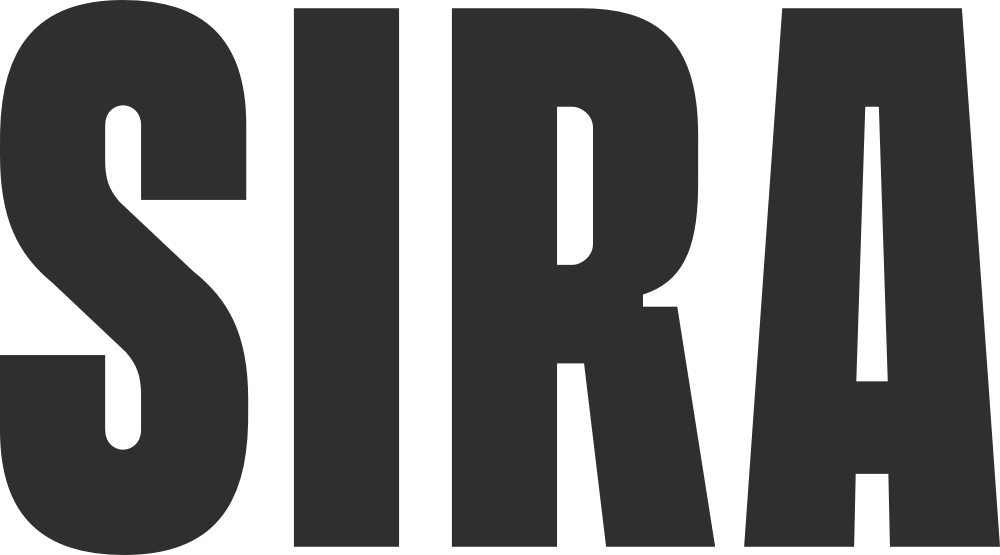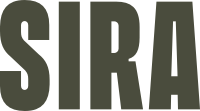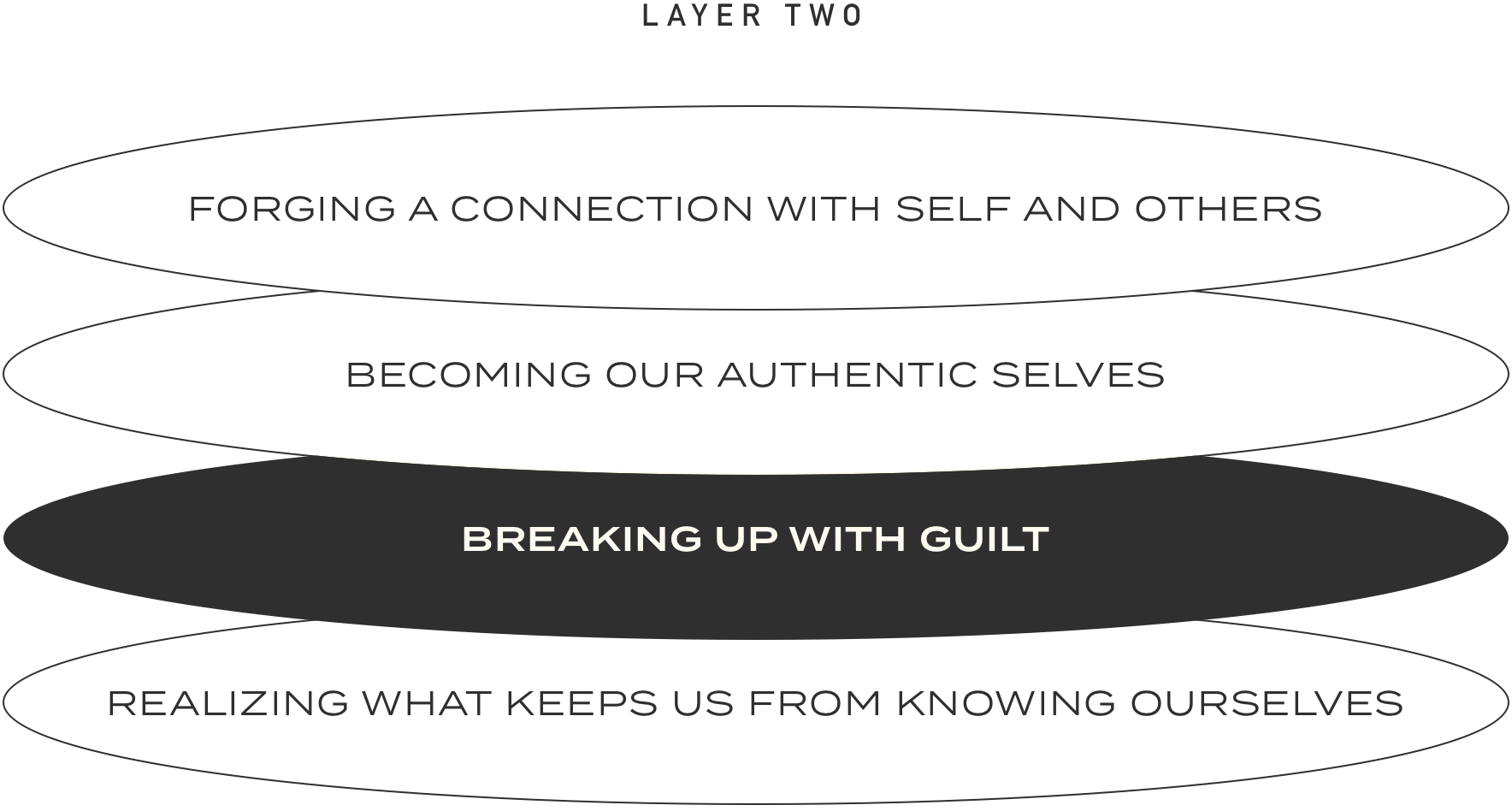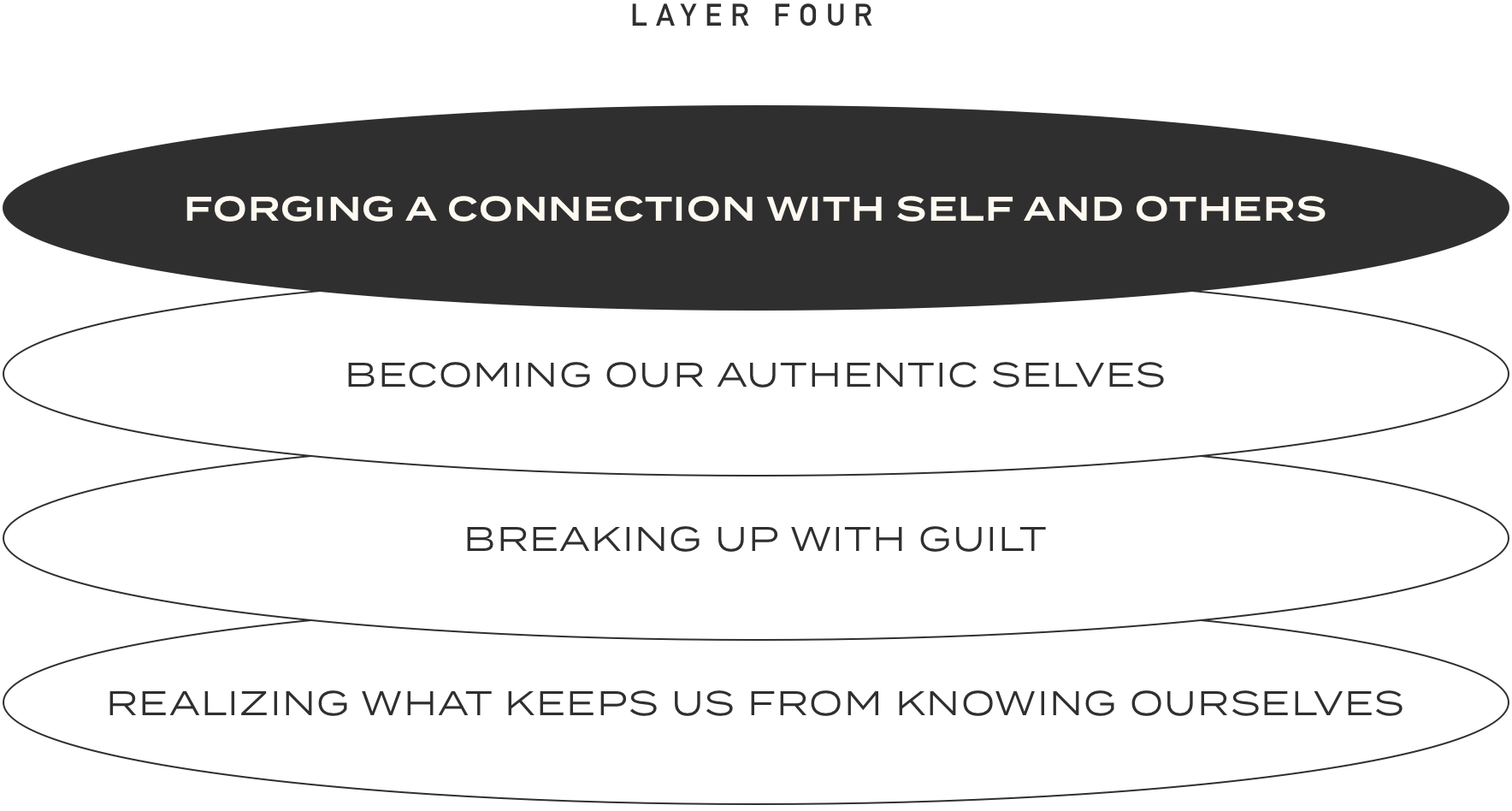Layers to Discovery
Introduction
Self-injury is complex, dynamic, and multi-layered. Self-injury has much to do with inner-child work, which is why we believe that the layers listed below help us understand and discover the “why” of our self-injury and how to regain healthy coping mechanisms, control, and freedom.
There is no quick fix or perfectionism in layer work. Recovery is ever-changing and evolving. Layer work is the beginning of walking into your freedom of the person you are meant to be.
Recovery isn’t linear and neither are the Layers to Discovery. These layers coexist and can be done in any order and repeated. They are meant to help you awaken and realize where you are in the layer process. Think about the present moment in your journey. Your goal is not to get out, but to get clarity.
We believe that we are always beginners in layer work. We never “graduate” or finish, and it is always a learning process. The process of recovery includes returning as often as necessary to behaviors and thought patterns that lead to your mental freedom.
In each layer, you will find guiding questions. It may help to write down your answers to these questions in a journal to track your layer work and see the changes in your thinking over time.
Layer one
Realizing What Keeps Us From Knowing Ourselves
Identify your self-hatred.
Think about how you self-talk vs. how you talk around others, and how people talk around you.
Where do feelings of worthlessness come from?
Be aware of negative self-talk and write it down.
Recognize when you have a false mask on and when you’re able to take it off.
Where are your thoughts during the act of self-injury?
Are you replaying the events of the day, almost like a movie, to realize what was actually bothering you?
Are you processing anger or a triggering moment?
Are you judging yourself?
Are you using “shoulds” and “shouldn'ts”?
Are you neutralizing self-blame?
Is the behavior an attempt to do something constructive and adaptive (even if it appears maladaptive)?
Does the behavior help you contain feelings?
Does the behavior help you let feelings out?
Is the behavior a punishment?
Whom do you wear a false mask around?
Realize when you don’t have a mask on (when you are authentically yourself).
Do you feel authentically yourself when you self-injure?
Pick up on the clues in your body when you are wearing or not wearing a mask.
When you feel disconnected from your body, are you wearing a mask?
Figure out how you feel in your body to identify your authentic self.
Think about what your self-injury behavior tells you. It may tell you something important, but it is not a solution.
Layer two
Breaking Up With Guilt
Start an open dialogue with self. (“The Breakup/Renegotiation”)
What is a healthier way you could achieve that outcome?
Consider what letting go of the behavior would mean for you.
How can you transform guilt into action?
Turn guilt into gratitude.
What does it mean for you to be without the behavior?
Think of the behavior and the results of the behavior. Look at both in new ways.
What would your life feel like without the behavior?
What does the behavior give you?
Do you feel that it gives you control?
Write down all the judgements you have of yourself.
What do you consider to be your “failures”?
Recognize your inward hate.
Identify when you feel guilty.
What are you doing when feelings of guilt come up?
Write down what you feel guilty about.
Allow the guilty voice to come.
Forgive yourself and move on.
Realize that thoughts are just thoughts, not facts or true stories.
If there is something in the thoughts that you need (insight), acknowledge it and allow it to come back in a healthy manner, rather than a destructive one.
Allow the thoughts to leave your mind like a dream.
Discover and let go of your rules/restrictions.
For what behaviors or circumstances do you have rules/restrictions?
Write down 1-3 of your rules/restrictions.
Are there rules/restrictions about your self-injury behavior?
Are they rules/restrictions to control your own behavior and reign yourself in?
Consider that these rules/restrictions may be fear-based and created for emotional safety.
What commonalities do your rules/restrictions have?
Consider the origin of where your rules/restrictions came from and how they served you.
Identify how you box yourself in.
Layer Three
Becoming Our Authentic Selves
Become your own loving authority figure.
What does a loving authority figure do? What does a loving authority figure not do?
Focus on praise instead of punishment.
Don’t engage in self-judgement or negative self-talk.
Be encouraging. Know that failure is learning.
Start setting boundaries.
What are healthy boundaries?
Know that it is ok to say no.
Organize a sense of self around your own opinions rather than those of others.
Reflect on what you want for yourself.
What has fear of rejection and judgement from others kept you from doing?
Write down things you haven’t gone for.
Write down things you have gone for.
Write down compliments you give yourself (no matter how small they may seem).
Discover what you like to do.
What activities do you enjoy?
Who do you like to be around?
Write down things you like about yourself.
Consider trying new things.
Layer four
Forging A Connection With Self And Others
Write an apology letter to yourself.
How have you harmed yourself by self-injury?
12 step programs typically include writing amends to others, but as self-injurers, we consider it an important part of our process to acknowledge the harm we have done to ourselves. Many of us have consciously chosen to damage ourselves rather than expressing ourselves and risking disappointing others. To us, the mildest form of disapproval from others may feel catastrophic, and we often go to great lengths to avoid it.
Connect with your spiritual self.
Many of our members are spiritual or agnostic and have not gravitated to any organized religion; some have had painful experiences with the idea of a higher power. Therefore, we leave your spirituality up to you and trust you to discover for yourself what rings true and supports your own process of self-discovery.






